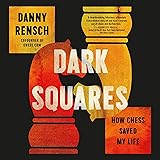Imagine a year in the gaming world where expectations were often tempered by past disappointments, yet suddenly, a resurgence of quality titles breathed new life into established franchises and introduced compelling new experiences. A seasoned gamer might recall the skepticism preceding many major releases, only to be pleasantly surprised by the depth and innovation encountered upon diving in. This sentiment was particularly true for the Xbox One, which, despite navigating a transitional period towards next-generation consoles, delivered a formidable lineup of Xbox One games 2019. The video embedded above provides a concise overview of the standout titles; however, a more profound exploration of these critically acclaimed entries reveals the strategic brilliance and creative prowess defining a banner year for Microsoft’s console.
The gaming landscape of 2019 was indeed a fascinating convergence of bold remakes, triumphant sequels, and refreshing new intellectual properties. Many developers showcased an exceptional commitment to refining core mechanics and enriching narrative structures, demonstrating a keen understanding of their player bases. This era represented a period where the foundational strengths of the Xbox ecosystem, including the burgeoning Xbox Game Pass, were significantly bolstered by an impressive array of top-tier software. The internal voting process at GamingBolt, as mentioned in the video, meticulously highlighted the cream of the crop, providing a definitive list for enthusiasts seeking the best of what 2019 had to offer on the Xbox One platform.
Discerning the Top Xbox One Games of 2019
The selection process for the premier best Xbox One games 2019 was undoubtedly rigorous, considering the sheer volume of high-quality releases. Each nominated title brought something unique to the table, ranging from revitalized horror to expansive open worlds and intricate combat systems. These games were not merely iterative updates; instead, they often represented significant evolutionary steps for their respective genres and franchises. The meticulous attention to detail in their development was consistently praised, establishing new benchmarks for graphical fidelity, gameplay innovation, and narrative immersion across the industry.
A closer examination of these entries reveals underlying trends in game development during this period. There was a clear emphasis on player agency, whether through expansive exploration mechanics or robust customization options. Furthermore, narratives were often crafted with greater complexity, inviting players to engage with rich lore and deeply developed characters. This strategic approach ensured that the gaming experiences were not only immediately gratifying but also offered substantial replayability and long-term engagement, solidifying their status among the year’s best.
Resident Evil 2: A Masterclass in Survival Horror
Capcom’s consistent surge in quality culminated magnificently with the release of Resident Evil 2 Xbox One, a title universally lauded as a seminal achievement in the survival horror genre. The game masterfully blends terrifying atmosphere with visceral, tactical combat, forcing players into tense encounters where resources are scarce. Its level design is meticulously constructed, encouraging methodical exploration while consistently ratcheting up the suspense, a characteristic often considered paramount for genuine horror. Visual fidelity in this remake achieved astonishing realism, contributing significantly to the immersive and chilling experience presented to players.
This reimagining set a new standard for remakes, demonstrating how modern technology can enhance a beloved classic without compromising its original spirit. The game effectively resurrected the franchise, proving that a focus on its core tenets—exploration, puzzle-solving, and managing limited resources under pressure—remains incredibly potent. Consequently, Resident Evil 2 is frequently cited as a high-water mark not only for Capcom but also for the entire survival horror genre, influencing subsequent development cycles within the industry.
Need for Speed Heat: Reclaiming Racing Supremacy
Against a backdrop of diminishing expectations for the franchise, Need for Speed Heat Xbox One emerged as a surprising and highly enjoyable entry, skillfully steering the series back towards its arcade racing roots. Ghost Games successfully distilled the essence of what players truly desire from a Need for Speed title: exhilarating speed, extensive vehicle customization, and pulse-pounding police chases. While previous iterations were often criticized for unnecessary story elements or intrusive monetization, Heat wisely eschewed these distractions, prioritizing pure, unadulterated racing excitement and progression.
The game’s day-night cycle, which dramatically shifts gameplay styles and rewards, was an innovative mechanic that captivated players. During the day, sanctioned races offer currency for upgrades, whereas night events provide reputation boosts crucial for unlocking new parts and challenges. Despite not reinventing the genre, its focus on satisfying core gameplay loops and its respectful approach to player engagement positioned Need for Speed Heat as a crucial first step on the path to genuine recovery for the long-running series, establishing a solid foundation for future iterations.
Kingdom Hearts 3: A Heartfelt Conclusion
The highly anticipated Kingdom Hearts 3 Xbox One, while often subject to critical discourse regarding its intricate narrative, undeniably captivated a vast audience, becoming the most commercially successful title in the franchise’s history. Its enduring appeal is largely attributed to the profound emotional core that has always been intrinsic to the series, which is prominently displayed throughout this installment. The game backs this emotional resonance with some of the most refined mechanics and inventive level designs seen across the entire saga, offering a fluid and engaging combat system.
Visuals in Kingdom Hearts 3 reach unprecedented heights, featuring Pixar-quality graphics that meticulously recreate various Disney worlds with astonishing care and detail. Navigating these vibrant, familiar landscapes and interacting with iconic characters provided an unparalleled sense of wonder and nostalgia. This concluding chapter to the often convoluted Dark Seeker saga managed to deliver an ultimately satisfying and poignant resolution, deeply rewarding long-time fans for their enduring commitment to its complex, heartfelt narrative.
Borderlands 3: An Evolution of Mayhem
Players approaching Borderlands 3 Xbox One knew precisely what to anticipate: an unrelenting torrent of mayhem and an astronomical arsenal of unique weaponry, true to the franchise’s established identity. This sequel strategically chose evolution over radical reinvention, refining an already successful formula rather than attempting an unnecessary overhaul. Gearbox Software effectively amplified the signature Borderlands experience, making it grander in scale, visually slicker, and operationally smoother across its myriad systems and mechanics.
The game’s core loop of “loot, shoot, and scoot” was significantly enhanced by diverse new planetary environments and innovative character classes, each offering distinct playstyles and skill trees. Imagine if every weapon drop genuinely felt like a discovery, with billions of procedurally generated guns promising endless variation and utility in combat encounters. Borderlands 3 excelled at delivering precisely that, ensuring that the relentless pursuit of better gear remained as addictive and rewarding as ever, cementing its place as a robust and improved iteration of a beloved looter shooter.
Devil May Cry 5: A Stylish Return to Form
Following a challenging period for the franchise, Devil May Cry 5 Xbox One marked a glorious return to its iconic roots, delivering an experience that perfectly aligned with fan expectations. Picking up directly after Devil May Cry 4, the game presented an exquisite blend of intense, stylish combat and remarkable mechanical depth that defined its predecessors. Players were empowered with a variety of distinct fighting styles across three playable characters, each offering unique abilities and customization options that encourage extensive experimentation.
Beyond its masterful combat, the game also featured a surprisingly engaging narrative, particularly rewarding for long-time followers of the series who appreciated its intricate lore. Coupled with best-in-class visuals that pushed the graphical capabilities of the Xbox One, Devil May Cry 5 was a resounding testament to Capcom’s capacity for delivering high-quality action titles when operating at peak performance. This title stands as a brilliant example of how to rejuvenate a revered franchise, satisfying both veteran players and new audiences alike.
Control: Remedy’s Narrative and Gameplay Peak
Control Xbox One represents Remedy Entertainment operating at its absolute zenith, showcasing their unique flair for compelling storytelling intertwined with innovative gameplay mechanics. The studio’s reputation for exceptional world-building and character development was further solidified, presenting a narrative that intricately weaves mystery and the supernatural, keeping players deeply invested. Its narrative prowess is matched by a gameplay experience unlike any other, characterized by chaotic, adrenaline-fueled combat and brilliantly designed, labyrinthine levels that actively encourage boundless exploration of its otherworldly setting.
The game’s signature ability to manipulate the environment using telekinetic powers provided an unparalleled sense of player empowerment, transforming combat encounters into dynamic, destructible playgrounds. While Remedy has produced a catalog of esteemed titles over the years, Control is frequently hailed as their magnum opus, a culmination of their development experience. Imagine if every combat scenario presented not just enemies, but also an arsenal of environmental objects to weaponize; Control delivers this distinctively, marking it as a truly unforgettable experience.
Gears 5: Revitalizing a Console Pillar
In a compelling resurgence for the series, Gears 5 Xbox One successfully recaptured much of the grandeur associated with its Xbox 360 predecessors, proving that the franchise was far from stale. The Coalition injected a much-needed dose of freshness through deeper progression mechanics and a significantly greater emphasis on exploration, evolving the traditional linear gameplay. This forward-thinking approach was deftly balanced with the series’ hallmark intense firefights, delivering the brutal, cover-based combat that fans have always known and loved.
On the multiplayer front, Gears 5 was unsurprisingly packed with addictive combat modes, ensuring that players could pour dozens upon dozens of hours into its competitive and cooperative offerings. The game served as an impressive statement of intent from The Coalition, demonstrating a clear vision for the franchise’s future. It not only provided an excellent new installment but also laid exciting groundwork with its innovative ideas, promising a remarkably bright future for the Gears of War saga if these new concepts are properly capitalized upon in subsequent titles.
The Division 2: Exemplary Looter Shooter Evolution
The Division 2 Xbox One exemplifies what an ideal sequel should embody: it meticulously preserves the lauded elements of its predecessor while thoughtfully identifying and significantly improving areas requiring refinement. The game features an extensive and engaging campaign, seamlessly integrated with an addictive loot-driven progression system that compels players to continuously upgrade their gear. Its vast ocean of content, coupled with excellent cover-shooting mechanics, solidified its position as one of the standout looter shooters of its generation.
While acknowledging that its post-launch support experienced some undeniable setbacks, the base game itself stands as one of Ubisoft’s most robust offerings on the current console generation. The intricate recreation of Washington D.C., complete with its challenging enemy factions and dynamic world events, provided a rich tapestry for continuous player engagement. Imagine a tactical shooter where cooperation is paramount and every piece of gear fundamentally alters your combat approach; The Division 2 delivers this tactical depth with remarkable precision.
Metro Exodus: A Journey into Open-Ended Horror
The 4A Games’ Metro series, though often operating outside the mainstream spotlight, consistently delivers unparalleled quality, and Metro Exodus Xbox One proved to be another memorable chapter. This installment diverged from its predecessors by adopting a much larger and more open-ended design, yet it commendably retained the taut tension and profound narrative focus cherished by long-time fans. The expansive environments actively encouraged organic exploration, seamlessly blending linear, story-driven segments with vast, hazardous open zones.
Despite its triumphs, there remained some room for refinement, particularly concerning areas such as overall polish and certain aspects of its shooting mechanics, which were perceived as somewhat flimsy. Nevertheless, Exodus delivered an unmissable single-player shooter experience, distinguished by its unique blend of survival horror, stealth, and exploration within a richly atmospheric post-apocalyptic world. Its courageous shift towards greater player freedom while maintaining its narrative integrity solidified its status as a critical entry in the series.
Star Wars Jedi: Fallen Order: The Single-Player Saga We Craved
After years of tantalizing teases and fleeting glimpses, Star Wars Jedi: Fallen Order Xbox One from Respawn Entertainment finally arrived, meeting and often exceeding the fervent expectations of a dedicated fanbase. This title fulfilled a long-standing desire for a robust, single-player Star Wars experience primarily driven by a compelling story and deeply developed characters. The narrative successfully captures the essence of the Star Wars universe, presenting a fresh perspective within its rich lore and canon.
Crucially, the game boasts excellent combat mechanics, combining precise parrying and dodging with powerful Force abilities, reminiscent of classic action-adventure titles. This combat prowess is intelligently interwoven with an exceptional blend of platforming challenges, intricate puzzle-solving, and rewarding exploration. All considered, Fallen Order represents the finest Star Wars game played in years, effectively demonstrating that narrative-focused, single-player experiences still hold immense value. Hopefully, this triumph will encourage EA to deliver more high-quality Star Wars experiences of this caliber on the Xbox One and beyond.
Gears 5: The Undisputed Champion of Xbox One Games 2019
Following the solid but ultimately unremarkable performance of Gears of War 4, both the franchise and its developer, The Coalition, faced a significant imperative to demonstrate substantial growth with Gears 5 winner Xbox One. In a single, decisive stroke, not only was the perceived staleness and potential irrelevance of the Gears franchise thoroughly disproven, but the series was also propelled forward in remarkably significant ways. This installment delivered one of the most compelling Xbox exclusives observed in years, showcasing a revitalized vision for the iconic third-person shooter.
What makes this victory even more compelling is the substantial groundwork laid by Gears 5 with its innovative new ideas and expanded gameplay mechanics. If The Coalition can successfully build upon these groundbreaking concepts, a profoundly promising future for the series appears highly probable. The strategic introduction of semi-open-world areas and deeper RPG-lite elements fundamentally transformed the gameplay loop, offering players an unprecedented degree of choice and exploration within the established Gears universe. This commitment to evolution firmly established Gears 5 as the crowning achievement among the elite Xbox One games 2019, setting a formidable standard for console exclusives.









